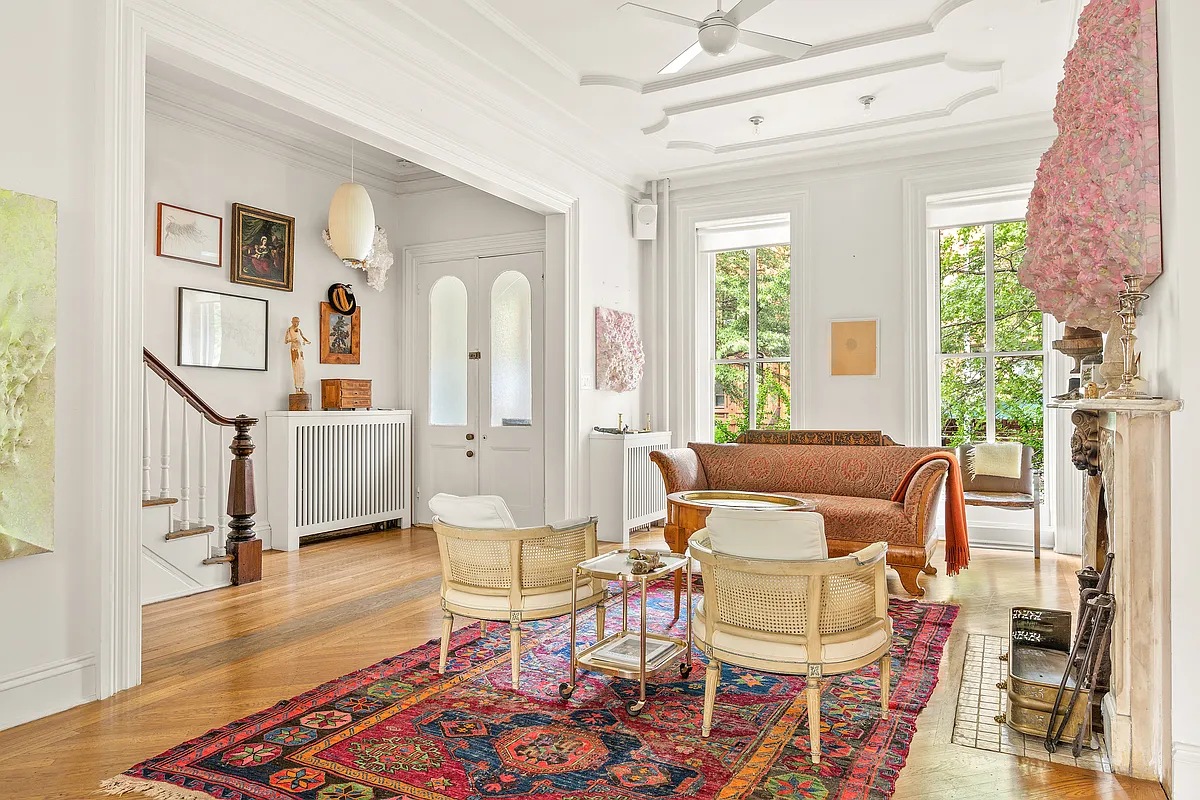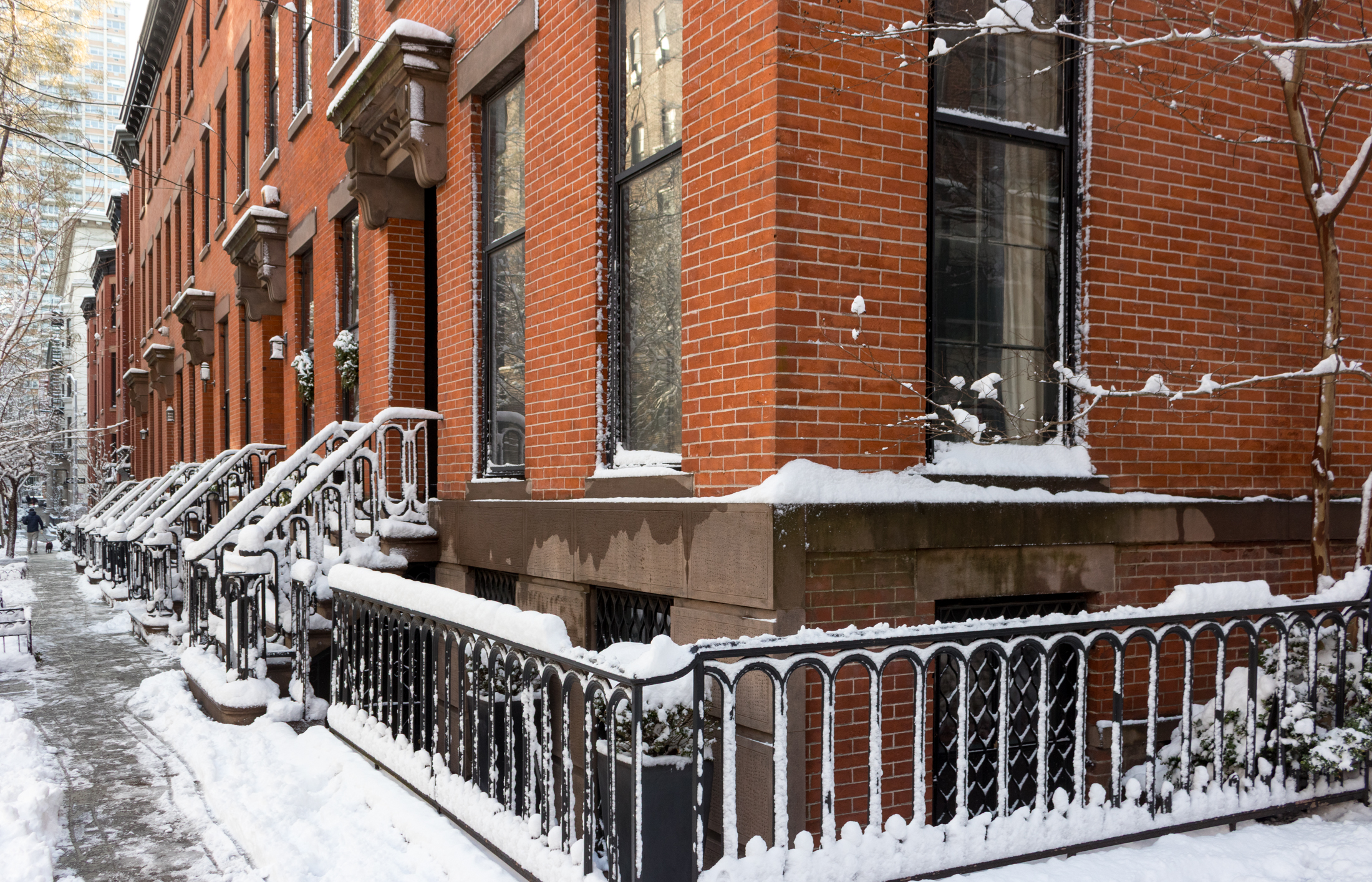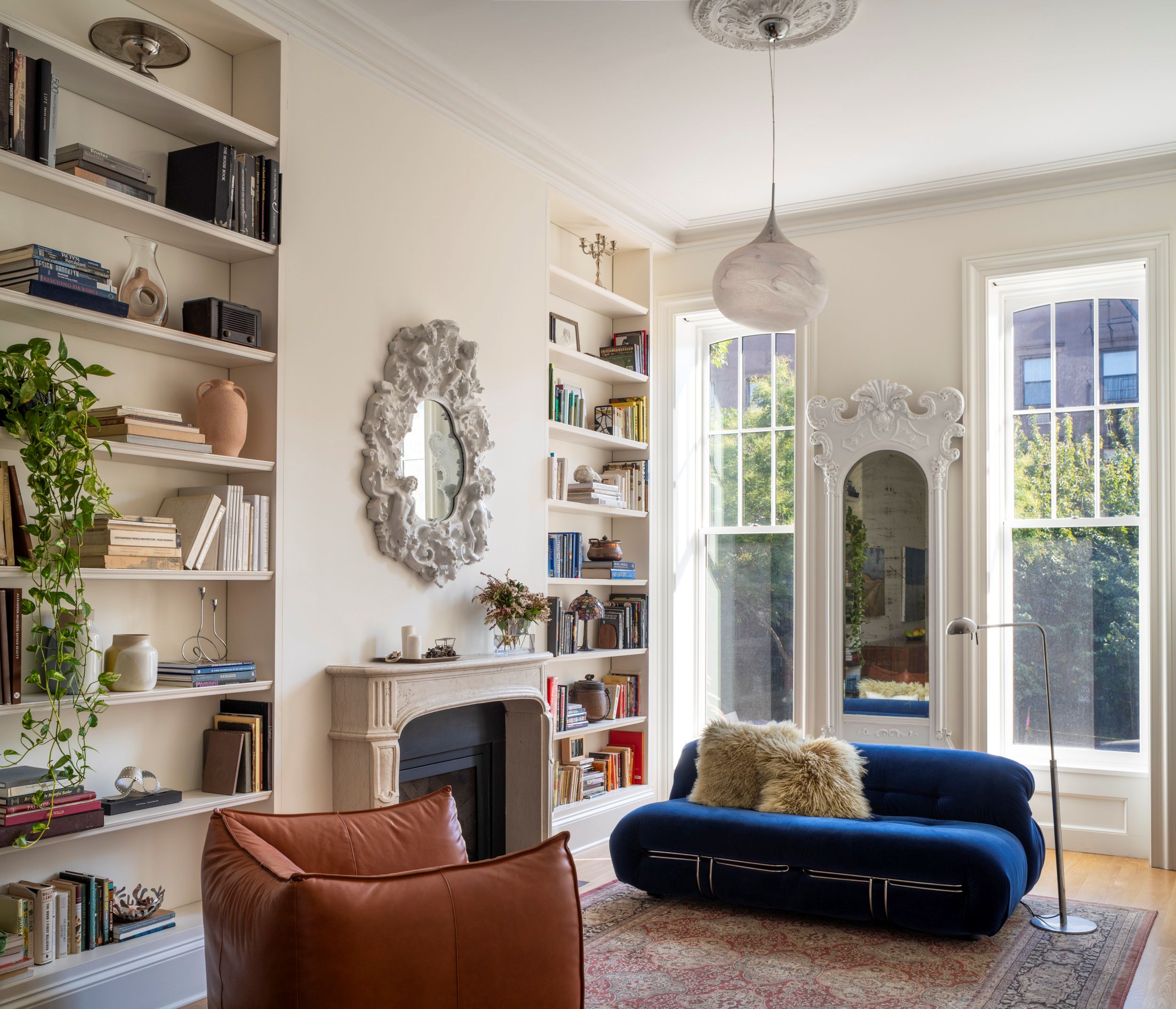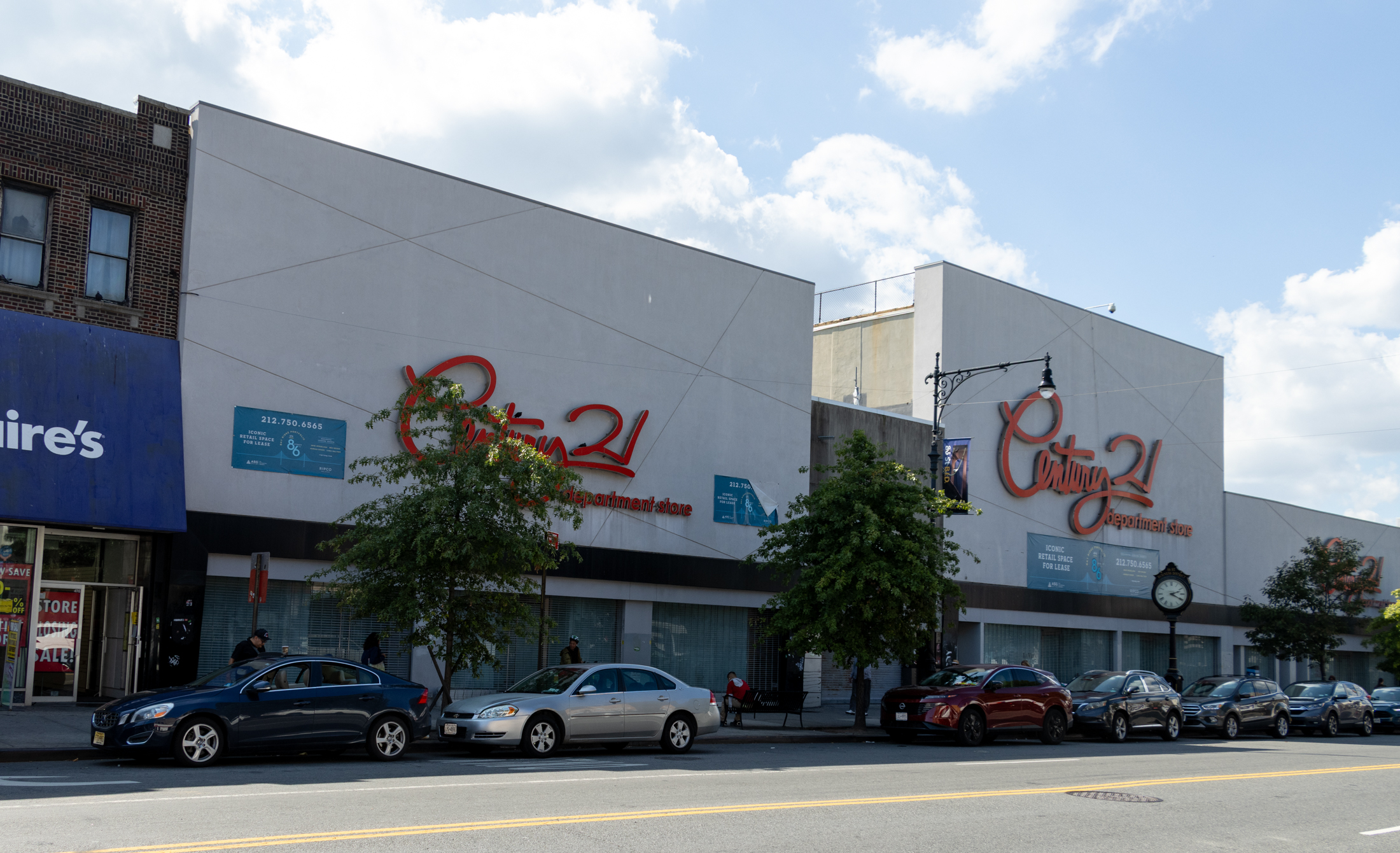Walkabout: The Manhattan Bridge, Part 1
Read Part 2 of this story. In the family of bridges that link our city, the beauty queen is of course, the Brooklyn Bridge. The Williamsburg Bridge is cast as the ugly sister, but the dysfunctional problem child is definitely the Manhattan Bridge. There have been problems with its design, its construction and its functionality…


Read Part 2 of this story.
In the family of bridges that link our city, the beauty queen is of course, the Brooklyn Bridge. The Williamsburg Bridge is cast as the ugly sister, but the dysfunctional problem child is definitely the Manhattan Bridge.
There have been problems with its design, its construction and its functionality since the day the ribbon was cut. Like most epic New York tales, the Manhattan Bridge story is of political machinations, enormous ego, unthinkable amounts of money, delays, death, and also great beauty.
Even Robert Moses makes an appearance in our tale. The Manhattan Bridge is the third bridge to cross the East River to Brooklyn, and was proposed when it became quite apparent that another bridge was needed to move goods and people from Manhattan to Brooklyn and beyond.
By 1898, the Brooklyn Bridge, now 15 years old, was carrying electric trolleys and an El train across the span (each way) and had its pedestrian lanes above, leaving only one lane in each direction for the wagons and all other traffic crossing between Manhattan and Brooklyn.
One traffic jam in 1898 was so bad, the weight on the bridge caused it drop 12 feet, and engineers were afraid that if the amount of traffic was not removed, the bridge would fall. It was obvious that another bridge was needed from downtown Manhattan to the busy Fulton Ferry area.
In 1901, plans were started for the new bridge, called Bridge No.3. The mayor of New York was Brooklyn’s own Seth Low, elected to be a reform mayor to counter the influence and graft of the Tammany Hall bunch, who were busy being the real power in NY.

Mayor Low hired engineer Gustav Lindenthal, a respected bridge engineer and architect to design what would be the Manhattan Bridge. Lindenthal had grand plans of a huge bridge with 14 lanes of track, as well as towers large enough at the base to hold auditoriums.
Design wise, it would be a suspension bridge looking like a morphed version of both the Brooklyn and Williamsburg Bridges. His most innovative idea was to use intersecting I bars, like giant bicycle chains instead of cable wire in the suspension.
Other engineers were skeptical of this construction, but the loudest complaint came from the Roebling Wire Company, which made the cables used on almost every suspension bridge since Papa and Mama Roebling had constructed the Brooklyn Bridge.
They were expecting the contract for Bridge No. 3, but they did not make giant bicycle chains, and the contract for the materials in a NYC bridge would have go elsewhere. This could not be. Lindenthal was undeterred, and was confident of his design.
He drew up the plans, but before they could be implemented, Low’s two year mayoral term was up, and the Tammany machine installed George McClellen as mayor.
McClellen appointed a political hack named George Best as Chief Engineer, who was not an engineer or even an architect, who immediately fired Lindenthal, and hired a Latvian-born bridge builder named Leon S. Moisseiff to complete the bridge.
The new plans called for the same sort of towers, but the suspension would be made of iron cable. Moisseiff’s design was based on a new engineering theory called suspension theory that postulated that suspension bridges were inherently stronger than was originally thought, due to their basic structure, so they didn’t really need to have the massive stiffening trusses that the Willliamsburg Bridge employed, because the curve of the cables allows for greater strength and flexibility than stiffer structures.

With that theory in mind, Moisseiff basically underbuilt the bridge, reducing the stiffened trusses from Lindenhal’s 55 feet to 26 feet, and then he also put the subway and streetcar tracks on the outer edges of the roadway, instead of in the middle, as in the both of the other East River bridges. In retrospect: bad idea, all around.
Mayoral terms in those days were short, and McClellan wanted this bridge to be open before he left office, so the race was on to finish it.
Because it was a Tammany Hall project, a whole lot of money had to be spread around, and the bridge, which was supposed to cost under $20 million ended up at $31 million by the time it was finished. Initially, that is. In reality, the bridge would become a massive black hole sucking money into its maw well into the 21st century. But I’m getting ahead of the story.
The respected architectural firm of Carrere and Hastings, designers of the NY Public Library, was brought in to design the approaches to the bridge, as well as some of the decorative elements in the towers.

In accordance with the very popular City Beautiful Movement, they designed large public plazas leading to the bridge from both sides, designed in a very grand Baroque manner with a gleaming triumphal arch and colonnade on the Manhattan side, and a more sedate, but impressive portal with statues on the Brooklyn side.
The very ornate Manhattan side was modeled on the Porte St. Denis, an entrance in Paris. The less ornate Brooklyn side featured statues by famed sculptor Daniel Chester French, the sculptor of the Lincoln Memorial.
He created two female figures depicting Manhattan and Brooklyn, on two large pedestals flanking the entrance to the bridge. These are now gone, removed in the 1960’s, the statues moved to the Brooklyn Museum.

Carrere and Hastings also embellished the ironwork of the bridge itself by adding Beaux Arts details to the towers. These details are best seen and appreciated from the pedestrian walkway.
Throughout the building of the bridge, the fired engineer, Gustav Lindenthal complained loudly about Tammany Hall ineptitude and graft, about overinflated budgets, delays and corruption. Mayor McClellan, who wanted to be seen as a reformer, although he wasn’t, rushed the bridge construction along to prove him wrong, and promised that his last act as mayor would be to open the bridge.

The four cables spanning the East River were spun in a record four months in 1908. He just squeaked through, and on December 31, 1909, the last day of the year, and on his last day in office, McClellen cut the ribbon and drove a small party of freezing Brooklynites across the bridge to great fanfare. Well, actually the bridge wasn’t really done.
No one would use it for a couple of years yet. The trolley tracks, subway tracks, and the pedestrian roadway were unfinished. The grand plazas wouldn’t be finished until 1916. The problems with the Manhattan Bridge were just beginning.

Next time: Problems, money, problems, money, problems, money……the rest of the story of the Manhattan Bridge.





Le Corbusier loved the GW Bridge.
The Manhattan Bridge has long been one of my favorites. It’s quite beautiful and always seems like the forgotten sister next to the Brooklyn Bridge. I have to read that book also, denton.
Smithsonian magazine has a nice short article on the building of the George Washington – which I always considered MY bridge when I was a kid since I grew up in the Bronx. http://www.smithsonianmag.com/history…/object_oct99.html
It seems that Ammann drove Lindenthal across the Geo Washington when it opened, in tribute to him. Lindenthal must have been both proud and heartbroken that he wasn’t the one to build it.
benson, there are a couple of great engineering projects going on today. There is the second ave subway, photos of the work there are amazing, there is the new water tunel, but that is about it. You’re right that we no longer have the desire to think big.
A new tunel to replace the inadequate and decrepit BQE makes so much sense, but unless it was built solely for the use of bicycles and stroller-joggers folks ain’t interested.
Minard;
I don’t know about you, but after reading books like “Crossing the Hudson”, I get upset about the current state of affairs in NYC. As you wrote above, we’ve lost the ability to think and act in a grand way. Adding to my frustration is that I am an engineer, so I have a natural affinity for seeing things built.
Just imagine trying to execute one of these projects today.
“Crossing the Hudson” is a great book. Getting men in outer space was nothing compared to getting trains under the Hudson.
Denton;
I have to check out that book on Ammann. I just finished reading a book entitled “Crossing the Hudson”, by David Wolf, which describes the circumstances behind all the major bridges and tunnels that cross the Hudson, up to Albany. From a risk-taking POV, it seems that the greatest feat was the building of the tunnel for the Pennsylvania RR in 1906 (now used by the NJ Transit). There were so many engineering unknowns when this project was initiated, yet they worked it out.
Congrats on having your photos published!
It goes to show that even with all the corruption and political shenanigans big projects were built. Grand ideas were dreamed up and then realized. Today big public works are out of favor.
Even new parks raise public outrage as evidenced by the loud opposition to the Brooklyn Bridge Park that is seen by many as an evil development scheme that will ruin our quality of life.
hey benson, you probably are aware there’s a book out on Ammann’s bridges… ‘Six Bridges: The Legacy of Othmar H. Ammann’.
Also, there’s a book by David Bennett called ‘The Creation of Bridges’, for which I supplied all the contemporary photos of the Brooklyn Bridge, including the cover of the American edition.
very interesting. never put my finger on it before but they really ruined the effect of the entrance on the manhattan side with the middle-income high rises they threw up right around there, very noticeable in the one color picture.